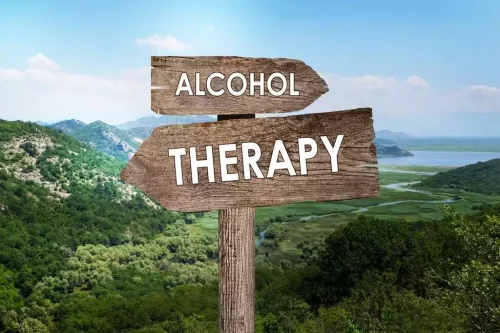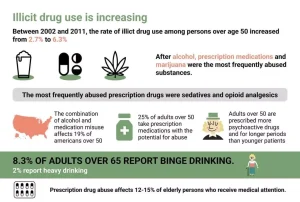
If you want to find the best sober living home near you, it’s important to carefully consider different options as each home is structured differently and usually has its own house rules. The best home for your individual needs might be one that is worth traveling for. If you or someone you love is struggling with drug or alcohol addiction, a sober living home may be the right solution.

What to Expect in Sober Living

Enter your phone number below to receive a free and confidential call from a treatment provider. Strict enforcement of these rules ensures a stable environment where you can focus on your recovery without external pressures or temptations. We do not receive any commission or fee that is dependent upon which treatment provider a caller chooses.
Why a Sober Living House

Whether you’re newly sober or looking to strengthen your commitment to sobriety, understanding the role of sober living homes is a vital step in your journey. For those who don’t suffer from any type of substance abuse or alcohol issues, it is no surprise that the term “sober housing” is unfamiliar. A https://ecosoberhouse.com/ is a drug free and substance free environment in which recovering substance abusers can learn to deal with their everyday challenges and have support when feeling the pains of their fading additions. All other residents that live in sober homes are also recovering from substance abuse or alcoholism. This helps create a network of individuals who are determined to get their lives back on track. While Level 3 houses are still considered “sober living homes,” they do incorporate aspects of clinical treatment.
Typical Day at a Sober Living Home
A place they will be proud to call their home, enjoy taking care of and being responsible for. As operations director for St. Paul Spirit House, a for-profit organization with four east-metro sober homes, Aric Smedstad has plenty of opinions about how homes for people in early recovery should be run. He knows better than anyone how important sober living is to long-term recovery — but he didn’t always feel that way. At this level, a house manager may reside in the house and will typically be a peer in long-term recovery. After completing a sober living program, you are encouraged to continue your professional or academic pursuits.


Here, you’ll find individuals at various stages of their recovery, each contributing to a collective reservoir of hope, strength, and encouragement. This network is pivotal in reducing feelings of isolation, often a trigger for relapse. This blend of independence, accountability, and community support is pivotal in transitioning from rehabilitation settings to everyday life. Residents are often required to seek employment, further their education, or engage in volunteer work. This aspect of sober living ensures that you not only work on staying sober but also on rebuilding your life and securing a stable future. Design for Recovery stands out for young men in Los Angeles striving to overcome addiction.
Sober transitional living spaces like sober homes can help you by limiting your access to drugs and alcohol. A variety of other studies have also found that sober living homes appear to be an effective component of the recovery process. Studies indicate that living in sober homes after inpatient sober house treatment increases recovery rates, financial strength and overall stability. Level IV employs an organizational hierarchy of credentialed staff and adds on clinical and administrative supervision. Level IV services include in-house clinical services and programming and life skill development.
Many sober living homes also require residents to pay weekly rent following a one-time move-in fee, according to Robilio. A Level II recovery residence assigns a house manager or senior resident to oversee the workings of the house and has at least one paid staff member. Level II includes the services of a Level I home as well as peer-run group and self-help and/or treatment. Halfway houses fall under the umbrella term “sober living home,” as both terms refer to residences where people in recovery stay before going back to living on their own, says Dr. Kennedy.
- People in recovery receive peer support and accountability in a level-one sober living home.
- This shared experience fosters strong bonds and support networks that are invaluable during tough times.
- Occasionally they are run by a charity or an addiction treatment center as a less structured and more informal version of the inpatient treatment plans they offer.
- The facilities are usually pleasant and can include private rooms and bathrooms.
- Sober living is a crucial step in this journey, offering a bridge between an inpatient facility and the real world.
Halfway houses, on the other hand, typically have a time limit and require residents to either be attending a treatment program or have recently completed one. Residents are often expected to engage in daily tasks such as seeking employment, attending educational programs, preparing meals, or handling chores. Residents must attend 12-step meetings like alcoholics anonymous, Narcotics Anonymous, and similar or other group activities. Most sober living homes require residents to pay rent, but it’s typically more affordable than many alternative housing options. Sober living houses also date back to the 1800s when religious organizations set up residencies where people were required to abstain from alcohol. More modern versions were opened in the 1940s and focused on supporting rehabilitation from substance abuse.
Sober living homes act as a bridge between the highly structured environment of inpatient rehab facilities and the numerous challenges of returning to everyday life. They provide a safe and supportive setting where you can develop life skills and coping mechanisms essential for long-term sobriety. With rules that enforce sobriety and encourage participation in daily tasks and recovery activities, these homes help you build a routine that supports your sobriety journey. Sober living refers to a supportive living environment for individuals recovering from addiction. It bridges the gap between inpatient rehab facilities and a return to normal life. You’ll find these homes crucial if you’re in recovery, offering more than just a place to stay; they provide structure, support, and a community of peers who are also on their journey to sobriety.
The NARR created standardized language and definitions that are used to identify the different types of sober living homes based on the level of services and structure that they provide. The NARR refers to all such homes as “recovery residences,” which is the nomenclature we will use throughout this guide. The NARR functions by certifying regional networks (referred to as “affiliates”) which then certify individual residences. Incorporating sober living homes into your recovery journey can significantly increase your chances of long-term sobriety. They offer a unique blend of independence, structure, and support tailored to those in recovery. Whether you’re transitioning from an inpatient facility or looking for additional support post-rehab, a sober living home could be an excellent step towards sustaining your sobriety.

 Offers free spin
Offers free spin